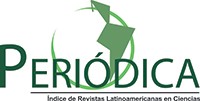HUMAN-PATHOGENIC PARASITES AND BACTERIA LOCATE IN STAGNANT-WATER DURING EL NIÑO-COSTERO PHENOMENON IN PERU
DOI:
https://doi.org/10.24039/rtb2021191886Keywords:
Climate change Diarrhea, El Nino-Southern Oscillation, Floods, Water-borne diseaseAbstract
Several countries are extremely susceptible to climate change and the El Niño-costero phenomenon affected more than two million people in Ecuador, Colombia, and Peru. We aimed to evaluate the microbiological quality of stagnant waters in Lambayeque region, Peru during the lockdown caused by El Niño-costero phenomenon. We conducted a cross-sectional study performed in the four Lambayeque’s districts: (Chiclayo’s downtown, Mocupe, San José, and Pimentel), Perú. Two simultaneous samples were taken from each evaluation districts and were transported to Laboratory for their entire microbiological analysis. We isolate of human-pathogenic parasite (Trichuris trichiura (Linnaeus, 1771) and Entamoeba histolytica Schaudinn, 1903), and bacteria (Staphylococcus aureus Rosenbach 1884 and Salmonella typhi (Schroeter, 1886)) that showed patterns of resistance to conventional first-line antimicrobials (penicillin, nalidixic acid, nitrofurantoin, and chloramphenicol). Likewise, we showed evidence of microorganisms related to the sampling site (district) and with the degree of affectation by the phenomenon. Our result suggests that the stagnant waters of four districts of Lambayeque presented Human-pathogenic parasites and bacteria of high-medical importance by the sudden changes in the climate through El Niño-costero phenomenon.
Downloads
Published
How to Cite
Issue
Section
License
Copyright (c) 2021 The Biologist

This work is licensed under a Creative Commons Attribution-NonCommercial-NoDerivatives 4.0 International License.
Objeto: El AUTOR-CEDENTE transfiere de manera TOTAL Y SIN LIMITACIÓN alguna al CESIONARIO (Revista The Biologist (Lima)) los derechos patrimoniales que le corresponden sobre sus obras por el tiempo que establezca la ley internacional. En virtud de lo anterior, se entiende que el CESIONARIO adquiere el derecho de reproducción en todas sus modalidades, incluso para inclusión audiovisual; el derecho de transformación o adaptación, comunicación pública, traducción, distribución y, en general, cualquier tipo de explotación que de las obras se pueda realizar por cualquier medio conocido o por conocer en el territorio nacional o internacional.
Remuneración: La cesión de los derechos patrimoniales de autor que mediante este contrato se hace será a título gratuito.
Condiciones y legitimidad de los derechos: El AUTOR-CEDENTE garantiza que es propietario integral de los derechos de explotación de la(s) obra(s) y en consecuencia garantiza que puede contratar y transferir los derechos aquí cedidos sin ningún tipo de limitación por no tener ningún tipo de gravamen, limitación o disposición. En todo caso, responderá por cualquier reclamo que en materia de derecho de autor se pueda presentar, exonerando de cualquier responsabilidad al CESIONARIO.
Licencia de acceso abierto: El AUTOR-CEDENTE autoriza que manuscrito publicado en la Revista Científica The Biologist (Lima) (versión Impresa ISSN 1816-0719, versión en línea ISSN 1994-9073) permanece disponible para su consulta pública en el sitio web http://revistas.unfv.edu.pe/index.php/rtb/index y en los diferentes sistemas de indexación y bases de datos en las que la revista tiene visibilidad, bajo la licencia Creative Commons, en la modalidad Reconocimiento-No comercial- Sin Trabajos derivados –aprobada en Perú, y por lo tanto son de acceso abierto. De ahí que los autores dan, sin derecho a retribución económica, a la Escuela Profesional de Biología, Facultad de Ciencias Naturales y Matemática de la Universidad Nacional Federico Villarreal (EPB - FCCNM - UNFV), los derechos de autor para la edición y reproducción a través de diferentes medios de difusión.









































